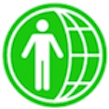Government urged to limit free drugs for seniors
 Tuesday, March 28, 2017 at 10:55AM
Tuesday, March 28, 2017 at 10:55AM
By David South
Today’s Seniors (Canada), May 1993
Another blow may be coming to seniors on top of last August’s cuts to the Ontario Drug Benefit Plan (ODBP). Health minister Ruth Grier has been advised to terminate the policy offering free drugs for Ontario residents over 65.
Assistant deputy health minister Mary Catherine Lindberg says the 13-page report from the Ontario Drug Reform Secretariat urges the government to replace universal coverage with a system based on income.
The government argues that fiscal problems, a desire to make wealthy seniors pay, and a need to extend the program to the working poor has driven them to consider the move, while critics argue it will hurt modest-to-lower-income seniors. They say costs could be better contained by keeping universal coverage and attacking the source of escalating costs: pharmaceutical manufacturers and doctors who over-prescribe or misprescribe.
Concession
If implemented, the cuts will represent a concession by the NDP on the once-sacred principle of universality. Just last year, former health minister Francis Lankin said, “I believe strongly in universality, and we’re not looking at ending it for drug coverage of seniors.”
The proposed plan calls for single people, regardless of age, who earn over $20,000 a year, and families earning over $40,000, to pay a premium of up to $300 for drug coverage.
Those earning less than that amount will have to pay for their own drugs until they reach a limit tied to their income to become eligible for free drugs.
The government says this changes qualifying for coverage from age to income-based.
In a recent interview, health minister Ruth Grier wouldn’t be specific about what plan she would go for. But she agrees with the report’s authors that the drug plan needs reform.
“While the drug plan makes drugs available in an open-ended way to everybody over 65,” says Grier. “In many cases it doesn’t help the low-income family with parents in minimum wage jobs and has a child needing constant drugs. And when we reform the system we aren’t just looking at how we can contain costs, but also how we can make it fairer. The underlying principle of all that we are doing is equity and fairness.”
The drug benefit plan, which also covers welfare recipients, hit $1.2 billion last year out of an almost $17 billion health budget. That was an increase of 13.8 per cent from 1991, but lower than the 18.1 per cent average for the last 10 years.
David Kelly at Toronto’s multi-service agency Senior Link suggests the government go after the drug industry for wasting money promoting drugs and duplicating research projects.
According to the industry advocate Pharmaceutical Manufacturers Association of Canada’s own statistics, drug companies spent $186 million on “marketing” in 1990 while $286 million actually went to research and development.
The federal government’s own Patent Medicine Prices Review Board, in an internal study leaked to The Globe and Mail, found Canada to have some of the highest drug prices among the seven industrialized nations.
Anger
Seniors organizations and agencies almost overwhelmingly expressed anger over the report, seeing it as another attack on universality of medicare. They feel the government isn’t being creative enough solving fiscal problems.
“I strongly disapprove,” says Sara Wayman, chairperson of the Ontario board of Canadian Pensioners Concerned. “The concept of universality when it comes to services is a basic democratic principle we support strongly. People who earn $20,000 a year are still struggling to make ends meet. This would represent a real hardship.
“We also feel strongly that the high medical costs that everybody is talking about aren’t really due to universality. They are really due to the high cost of drugs, and because there has been a restraint of generic drugs by our legislature.
“They are tip toeing around the medical profession. I hope people will speak out.”
Kelly feels savings could be reaped by taxing back any benefits given to wealthy seniors, while maintaining the universality of programs.
“The group they are talking about is very tiny,” says Kelly. “And so the cost savings to the government are going to be really minimal. A whole process will have to be set up to decide who gets free drugs, and what you get is another layer of bureaucracy everyone has to go through. Studies have shown this adds to the net costs of government in the long run.”


 May 1993,
May 1993,  Today's Seniors,
Today's Seniors,  age,
age,  austerity,
austerity,  drug benefits,
drug benefits,  drugs,
drugs,  health,
health,  health care,
health care,  healthcare,
healthcare,  medicare,
medicare,  rationing,
rationing,  seniors in
seniors in  Today's Seniors
Today's Seniors 

